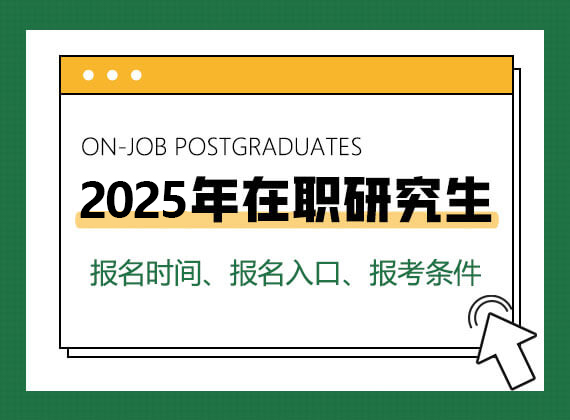1998年同等学力申硕英语全国统一考试真题
来源:在职研究生招生信息网 发布时间:2011-10-22 16:29:14
外国语水平全国统一考试
Paper One 试卷一
(90 minutes)
Part I Listening Comprehension (20 minutes, 15 points) (略)
Part II Vocabulary (10 minutes, 10 points, 0.5 for each )
Section A
Directions: In each item, choose one word that best keeps the meaning of the sentence if it is substituted for the underlined word. Mark out pour choice on the ANSWER SHEET with a single line through the center.
16. People of diverse backgrounds now fly to distant places for pleasure, business or education.
A) different B) distinctive C) similar D) separate
17. The fun of playing the game was a greater incentive than the prize.
A) motive B) initiative C) excitement D) entertainment
18. Sometimes the messages are conveyed through deliberate, conscious gestures; other times, our bodies talk without our even knowing.
A) definite B) intentional C) delicate D) interactive
19.Hunters have almost exterminated many of the larger animals while farmers destroyed many smaller animals.
A) wounded B) reduced C) killed D) trapped
20. Today black children in South Africa are still reluctant to study subjects from which they were effectively barred for so long.
A) anxious B) curious C) opposed D) unwilling
21. If a cat comes too close to its nest, the mockingbird initiates a set of actions to protect its offspring.
A) hastens B) triggers C) devises D) releases
22. Panic swept through the swimmers as they caught sight of a huge shark approaching menacingly.
A) Tension B) Excitement C) Fear D) Nervousness
23. Lighting levels are carefully controlled to fall within an acceptable level for optimal reading convenience.
A) ideal B) required C) optional D) standard
24. Many observers believe that country will remain in a state of chaos if it fails to solve its chronic food shortage problem.
A) transient B) starving C) severe D) serial
25. The exhibition is designed to facilitate further cooperation between Chinese TV industry and overseas TV industries.
A) establish B) maximize C) guarantee D) promote
Section B
Directions: In each question, decide which of the four choices given will most suitably complete the sentence if inserted at the place marked. Mark out pour choice on the ANSWER SHEET with a single line through the center.
26. Anyone who can study abroad is fortunate; but, of course, it is not easy to make the_________ from one culture to another
A) transaction . B) transportation C) transmission D) transition
27. We_________ that diet is related to most types of cancer but we don not have definite proof.
A) assure B) suspect C) ascertain D) suspend
28. How large a proportion of the sales of stores in or near resort areas can be_________ to tourist spending?
A) contributed B) applied C) attributed D) attached
29. Not all persons arrested and_________ with a crime are guilty, and the main function of criminal courts is to determine who is guilty under the law. A) sentenced B) accused C) persecuted D) charged
30. He_________ in court that he had seen the prisoner run out of the bank after it had been robbed.
A) justified B) witnessed C) testified D) identified
31. If you are a member of a club, you must_________ to the rules of that club.
A) conform B) appeal C) refer D) access
32. With the constant change of the conditions, the outcome is not always_________.
A) favorable B) predictable C) dependable D) reasonable
33. Instead of answering the question, the manager_________ his shoulders as if it were not important.
A) shrugged B) touched C) raised D) patted
34. I am sorry for the_________ tone of your letter, but feel sure that things are not so bad with you as you say.
A) apologetic B) threatening C) pessimistic D) grateful
35. A patient who is dying of incurable cancer of the throat is in terrible pain, which can no longer be satisfactorily _________.
A) diminished B) alleviated C) relaxed D) abolished
Part II Reading Comprehension (50 minutes, 30 Points)
Directions: There are 6 passages in this part. Each passage is followed by some questions or unfinished statements. For each of them there are four choices marked A , B, C and D . You should decide on the best choice and mark the corresponding letter on the ANSWER SHEET with a single line through the center.
Passage One
Nuclear power is danger to health, safety, and even life itself can be summed up in one word: radiation.
Nuclear radiation has a certain mystery about it, partly because it cannot be detected by human senses. It can not be seen or heard, or touched or tasted, even though it may be all around us. There are other things like that. For example, radio waves are all around us but we can not sense radioactivity without a radiation detector .But unlike common radio waves, nuclear radiation is not harmless to human beings and other living things.
At very high levels, radiation can kill an animal or human being outright by killing masses of cell in vital organs. But even the lowest levels can do serious damage. There is no level of radiation that is completely safe. If the radiation does nor hit anything important, the damage may not be significant. This is the case when only a few cells are hit, and if they arc killed outright. Your body will replace the dead cells with healthy ones. But if the few cells arc only damaged, and if they reproduce themselves, you may be in trouble. They reproduce themselves in a deformed way. They can grow into cancer. Sometimes this does not show up for many years.
This is another reason for some of the mystery about nuclear radiation. Serious damage can be done without the victim being aware at the time that damage has occurred. A person can be irradiated and feel fine, then die of cancer five, ten, or twenty years later as a result. Or a child can be born weak or liable to serious illness as a result of radiation absorbed by its grandparents.
Radiation can hurt us. We must know the truth.
36. According to the passage, the danger of nuclear power lies in _________.
A) nuclear mystery
B) radiation detection
C) radiation level
D) nuclear radiation
37. Radiation can cause serious consequences even at the lowest level _________.
A) when it kills few cells
B) if it damages few cells
C) though the damaged cells can repair themselves
D) unless the damaged cells can reproduce themselves
38. The word “significant” in paragraph 3 most probably means _________.
A) remarkable
B) meaningful
C) fatal
D) harmful
39. Radiation can hurt us in the way that it can _________.
A) kill large numbers of cells in main organs so as to cause death immediately.
B) damage cells which nay grow into cancer years later
C) affect the healthy growth of our offspring
D) All of the above.
40. Which of the following can be best inferred from the passage?
A) The importance of protection from radiation cannot be over-emphasized.
B) The mystery about radiation remains unsolved.
C) Cancer is mainly caused by radiation.
D) Radiation can hurt those who are not aware of its danger.
Passage Two
In some ways, the United States has made spectacular progress. Fires no longer destroy 18,000 buildings as they did in the Great Chicago Fire of 1871, or kill half a town of 2,400 people, as they did the same night in Peshtigo, Wisconsin. Other than the Beverly Hill Supper Club fire in Kentucky, in 1977, it has been four decades since more than 100 Americans died in a fire.
But even with such successes, the United States still has one of the worst fire death rates in the world. Safety experts say the problem is neither money nor technology, but the indifference of a country that just will not take Fires seriously enough.
American fire departments are some of the world is fastest and best equipped. They have to be. The United States has twice Japan is population, and 40 times as man` Fires. It spends far less on preventing fires than on fighting them. American Fire-safety lessons are aimed almost entirely at children, who die in disproportionately large numbers in fires but who, contrary to popular myth, start very few of them.
Experts say the fatal error is an attitude that fires are not really anyone is fault. Thai is not so in other countries, where both public education and the law treat Fires as either a personal failing or a crime. Japan has many wood houses; of the estimated 48 fires in world history that burned more than 10,000 buildings, Japan has had 27. Penalties for by negligence can be as high as life imprisonment.
In the United States, most education dollars are spent in elementary schools. But the lessons are aimed at too limited an audience; just 9 percent of all Fire deaths are caused by children playing with matches.
The United States continues to rely more on technology than laws or social pressure. There are smoke detectors in 85 percent of all homes. Some local building codes now require home sprinklers. New heaters and irons shut themselves off if they are tipped.
41. The reason why so many Americans die in fires is that _________.
A) they took no interest in new technology
B) they did not attach great importance to preventing fires
C) they showed indifference to fighting Fires
D) they did not spend enough money on fire facilities
42. Although the Fire death rate has declined, the United States ________.
A) still has the worst fire death rate in the world
B) is still alert to the fire problem
C) is still training a large number of safety experts
D) is still confronted with the serious fire problem
43. It can be inferred from the passage that ________.
A) fire safety lessons should be aimed at American adults
B) American children have not received enough education of fire safety lesson
C) Japan is better equipped with fire facilities than the Untied States
D) America is large population accounts for high fire frequency
44. In what aspects should the United States learn from Japan?
A) Architecture and building material.
B) Education and technology.
C) Laws and attitude.
D) All of the above
45. To narrow the gap between the fire death rate in the United States and that in other countries, the author suggests ________.
A) developing new technology
B) counting more on laws and social pressure
C) placing a fire extinguisher in every family
D) reinforcing the safeness of household appliances
Passage Three
There are hidden factors which scientists call “feedback mechanisms”. No one knows quite how they will interact with the changing climate. Here is one example: plants and animals adapt to climate change over centuries. At the current estimate of half a degree centigrade of warming per decade, vegetation(植物) may not keep up. Climatologist James Hansen predicts climate zones will shift toward the poles by 50 to 75kilometres a year-faster than trees can naturally migrate. Species that find themselves in an unfamiliar environment will die. The 1000kilometre-wide strip of forest running through Canada, the USSR and Scandinavia could be cut by half. Millions of dying trees would soon lead to massive forest fires, releasing ions of CO2 and further boosting global warming.
There arc dozens of other possible. feedback mechanisms . Higher temperatures will fuel condensation and increase cloudiness, which may actually damp down global warming. Others, like the ‘albedo’ effect, will do the opposite. The. ‘albedo’ effect is the amount of solar energy reflected by the earth is surface. As northern ice and snow melts and the darker sea and land pokes( 戳) through, more heat will be absorbed, adding to the global temperature increase.
Even if we were to magically stop all greenhouse-gas emissions tomorrow the impact on global climate would continue for decades. Delay will simply make the problem worse. The fact is that some of us are doing quite well the way things are. In the developed world prosperity has been built on 150 years of cheap fossil fuels.
Material progress has been linked to energy consumption. Today 75 per cent of all the world is energy is consumed by a quarter of the world is population. The average rich world resident adds about 3.2 tons of CO2 yearly to the atmosphere, more than four times the level added by each Third World citizen. The US, with just seven per cent of the global population, is responsible for 22 per cent of global warming.
46.”Feedback mechanisms” in paragraph 1 most probably refer to ________.
A) how plants and animals adapt to hidden factors
B) how plants and animals interact with the changing climate
C) how climate changes
D) how climate zones shift
47. James Hansen predicts that the shift of climate zones will be accompanied by ________.
A) the cutting of many trees.
B) desirable environmental changes.
C) successful migration of species.
D) unsuccessful migration of trees.
48. We can learn from the passage that ________.
A) some feedback mechanisms may slow down global warming
B) the basic facts of global warming are unknown
C) developing countries benefit from cheap fossil fuels
D) developed countries have decided to reduce their energy consumption
49. It can be inferred from the passage that ________.
A) the developing world has decided to increase its energy consumption
B) a third-world citizen adds less than a ton of CO2 yearly to the atmosphere
C) the world climate would soon gain its balance if we stopped greenhouse gas emissions
D) future prosperity of the world is dependent on cheap fossil fuels
50. Which of the following is the main topic of the passage?
A) Material progress and energy consumption.
B) Prosperity and cheap fossil fuels.
C) Impact of global warming on climate.
D) Plants and animals in the changing climate.
Passage Four
Learning disabilities are very common. They affect perhaps 10 percent of all children. Four times as many boys as girls have learning disabilities.
Since about 1970, new research has helped brain scientists understand these problems better. Scientists now know there are many different kinds of learning disabilities and that they are caused by many different things. There is no longer any question that all learning disabilities result from differences in the way the brain is organized. You cannot look at a child and tell if he or she has a learning disability. There is no outward sign of the disorder. So some researchers began looking at the brain itself to learn what might be wrong.
In one study, researchers examined the brain of a learning-disabled person, who had died in an accident. They found two unusual things. One involved cells in the left side of the brain, which control language. These cells normally are white. In the learning disabled person, however, these cells were gray. The researchers also found that many of the nerve cells were not in a line the way they should have been. The nerve cells were mixed together.
The study was carried out under the guidance of Norman Geschwind, an early expert on learning disabilities. Doctor Geschwind proposed that learning disabilities resulted mainly from problems in the left side of the brain. He believed this side of the brain failed to develop normally. Probably, he said, nerve cells there did not connect as they should. So the brain was like an electrical device in which the wires were crossed.
Other researchers did not examine brain tissue. Instead, they measured the brain is electrical activity and made a map of the electrical signals.
Frank Duffy experimented with this technique at Children is Hospital Medical Center in Boston. Doctor Duffy found large differences in the brain activity of normal children and those with reading problems. The differences appeared throughout the brain. Doctor Duffy said his research is evidence that reading disabilities involve damage to a wide area of the brain, not just the left side.
51. Scientists found that the brain cells of a learning-disabled person differ from those of a normal person in ________.
A) structure and function
B) color and function
C) size and arrangement
D) color and arrangement .
52. Which of the following is NOT mentioned in the passage?
A) Learning disabilities may result from the unknown area of the brain.
B) Learning disabilities may result from damage to a wide area of the brain.
C) Learning disabilities may result from abnormal organization of brain cells.
D) Learning disabilities may result from problems in the left side of the brain.
53. All of the following statements are true EXCEPT that ________.
A) many factors account for learning disorder
B) a learning disabled person shows no outward signs
C) reading disabilities are a common problem that affects 10 percent of the population
D) the brain activity of learning disabled children is different from that of normal children
54. Doctor Duffy believed that ________.
A) he found the exact cause of learning disabilities
B) the problem of learning disabilities was not limited to the left side of the brain
C) the problem of learning disabilities resulted from the left side of the brain
D) the problem of learning disabilities did not lie in the left side of the brain
55. According to the passage we can conclude that further researches should be made ________.
A) to investigate possible influences on brain development and organization
B) to study, how children learn to read and write, and use numbers
C) to help learning disabled children to develop their intelligence
D) to explore how the left side of the brain functions in language learning
Passage Five
Visual impairment(视觉障碍) carries with it a reduced or restricted ability to travel through one is physical and social environment until adequate orientation and mobility skills have been established. Because observational skills are more limited, self-control within the immediate surroundings is limited. The visually impaired person is less able to anticipate hazardous situations or obstacles to avoid.
Orientation refers to the mental map one has of one is surroundings and to the relationship between self and that environment. The mental map is best generated by moving through the environment and piecing together relationships, object by object, in an organized approach. With little or no visual feedback to reinforce this mental map, a visually impaired person must rely on memory for key landmarks and other clues. Landmarks and clues enable visually impaired persons to affirm their position in Space.
Mobility, on the other hand, is the ability to travel safely and efficiently from one point to another within one is physical and social environment. Good orientation skills are necessary to good mobility skills. Once visually impaired students learn to travel safely as pedestrians(行人) they also need to learn to use public transportation to become as independent as possible .
To meet the expanding needs and demands of the visually impaired person, there is a sequence of instruction that begins during the preschool years and may continue after high school. Many visually impaired children lack adequate concepts regarding time and space or objects and events in their environment. During the early years much attention is focused on the development of some fundamental concepts, such as inside or outside, in front of or behind, fast or slow, movement of traffic, the variety or intersections, elevators or escalators, and so forth. These concepts are essential to safe, efficient travel through familiar and unfamiliar settings, first within buildings, then in residential neighborhoods, and finally in business communities.
56. How can we increase the visually impaired person is ability to travel through his physical and social environment?
A) By helping him develop adequate orientation and mobility skills.
B) By teaching him to learn observational skills.
C) By warning him of hazardous situations or obstacles.
D) By improving his visual ability.
57. The visually impaired person is position in space ________.
A) is not determined by memory but by physical landmarks and clues
B) is located in relation to other items in his mental map
C) enables him to construct the mental map
D) reinforces the mental map of his surroundings
58. Mobility skills which the visually impaired person is learning refer to the ability ________.
A) to travel as a dependent tourist
B) to travel as a pedestrian and a passenger
C) to travel as a pedestrian with a company
D) to travel within the safe physical and social environment
59. In the passage, the author insists that ________.
A) visually impaired children go to school for survival
B) the needs and demands of visually impaired children expand
C) visually impaired children acquire the fundamental concepts for safe mobility .
D) preschool children receive the instruction in the concepts of time and space or objects and events
60. What is the author mainly talking about in the passage?
A) Visual impairment and memory.
B) The visually impaired person is physical and social environment.
C) Mental development of the visually impaired person.
D) Orientation and mobility of the visually impaired person.
Passage Six
Our bodies are wonderfully skilful at maintaining balance. When the temperature jumps, we sweat to cool down. When our blood pressure falls, our hearts pound to compensate. As it turned out, though, our natural state is not a steady one .Researchers are finding that everything from blood pressure to brain function varies rhythmically with the cycles of sun, moon and seasons. And their insights are yielding new strategies for keeping sway such common killers as heart disease and cancer. Only one doctor in 20 has a good knowledge of the growing field of “chronotherapeutics,” the strategic use of time (chronos) in medicine. But according to a new American Medical Association poll, three out of four are eager to change that “The field is exploding", says Michael Smolensky. “Doctors used to look at us like, ‘What spaceship did you guys get off ?’ Now they’re thirsty to know more."
In medical school, most doctors learn that people with chronic conditions should take their medicine at steady rates. “It is a terrible way to treat disease," says Dr. Richard Martin. For example, asthmatics (气喘患者) are most likely to suffer during the night. Yet most patients strive to keep a constant level of medicine in their blood day and night, whether by breathing in on an inhaler (吸入器) four times a day or taking a pill each morning and evening. In recent studies, researchers have found that a large mid-afternoon dose of a bronchodilator(支气管扩张剂) can be as safe as several small doses, and better for preventing nighttime attacks.
If the night belongs to asthma, the dawn belongs to high blood pressure and heart disease. Heart attacks are twice as common at 9 a.m. as at 11 p. m.. Part of the reason is that our blood pressure fails predictably at night, then peaks as we start to work for the day. “Doctors know that”, says Dr. Henry Black of Chicago’s Medical Center, “but until now, we haven not been able to do anything about it." Most blood pressure drugs provide 18 to 20 hours of relief. But because they are taken in the morning, they are least effective when most needed. “You take your pill at 7and it is working by 9,”says Dr. William White of the University of Connecticut Health Center, “but by that time you have gone through the worst four hours of the day with no protection ,” Bedtime dosing would prevent that lapse ,but it would also push blood Pressure to dangerously low levelsduring the night.
61 . According to the passage, how do human bodies maintain balance?
A) They adjust themselves timely in line with their Physical conditions .
B) People increase or lower the body temperature by sweating.
C) People is hearts pound to compensate when the blood pressure goes up.
D) Both B and C.
62. Researchers are finding that ________.
A). heart disease and cancer are the most common killers of human beings
B) blood pressure and brain function are decided by cycles of sun, moon and seasons
C) the functions of human bodies have much to do with nature
D) any change in human bodies goes systematically with changes in the environment
63. According to the author, it is best for asthmatics to take their medicines ________.
A) at steady rates
B) each morning and evening
C) when the disease occurs
D) at mid-afternoon
64. Which of the following statements is NOT true?
A) Doctors know more about chronotherapeutics than before.
B) Doctors in the U.S. used to be thirsty the U.S. used to be thirsty to know more about the new medical field.
C) The researchers, insights are providing new strategies to prevent common killers .
D) The strategic use of time in medicine attracts more attention in the medical circle in the U.S.
65. The suggested title for this passage might be ________.
A) Medicine is Everything
B) Treatment is Everything
C) Timing is Everything
D) Prevention is Everything
Part IV Cloze Test (15 minutes,10 points)
Directions: There are 20 blanks in the following passage. For each blank there are four choices marked A, B, C and D on the right side on the paper. You should choose the ONE that best fits into the passage Then mark the corresponding letter on the ANSWER SHEET with single line through the center.
Music comes in many forms; most countries have a style of their own.__66__the turn of the century when jazz(爵士乐)was born, America had no prominent__67 __of its own. No one knows exactly when jazz was__ 68__, or by whom., but it began to be__69__in the early 1900s. Jazz is America is contribution to__70__music. In contrast to classical music, which__71__ formal European traditions. jazz is spontaneous and free-form. It bubbles with energy, __72__ moods, interests, and emotions of the people. In the 1920s jazz__73__like American, and__74__it does today. The__75__of this music are as interesting as the music__76__ . American Negroes, or blacks, as they are called today, were the Jazz__77__. They were brought to the Southern states__ 78__ slaves.They were sold to plantation owners and forced to work long__79__. When a Negro died, his friends and relatives__80__a procession to carry the body to the cemetery. In New Orleans, a band often accompanied the__ 81__. On the way to the cemetery the band played slow, solemn music suited to the occasion.__82__on the way home the mood changed. Spirits lifted. Death had removed one of their__83__, but the living were glad to be alive. The band played__84__music, improvising (即兴表演) on both the harmony and the melody of the tunes__85__at the funeral. This music made everyone want to dance. It was an early form of Jazz.
66. A) By B) At C) In D) On
67. A) music B) song C) melody D) style
68. A) discovered B) acted C) invented D) designed
69. A) noticed B) found C) listened D) heard
70. A) classical B) sacred C) Popular D) light
71. A) forms B) follows C) approaches D) introduces
72. A) expressing B) explaining C) exposing D) illustrating
73. A) appeared B) felt C)seemed D) sounded
74. A) as B) so C) either D) neither
75. A) origins B) originals C) discoveries D) resources
76. A) concerned B) itself C) available D) oneself
77. A) Players B) followers C) fans D) pioneers
78. A) for B) as C) with D) by
79. A) months B) weeks C) hours D) times
80. A) demonstrated B) composed C) hosted D) formed
81. A) demonstration B) procession C) body D) march
82. A) Even B) Therefore C) Furthermore D) But
83. A) number B) members C) body D) relations
84. A) sad B) solemn C) happy D) funeral
85. A) whistled B) sung C) presented D) showed
Paper One 试卷二
(60 minutes)
Part I Error Detection and Correction (10 minutes, 10 points)
Directions: Each of the following sentences has four underlined parts. These ports are labeled A, B, C and D. Identify the pert of the sentence that is incorrect and mark out your choice on the ANSWER SHEET Then, without altering the meaning of the sentence, write down pour correction on the line on the ANSWER SHEET .
1. Evidently we didn not understand directions, for we made a wrong turn and found us lost,
A B C
confused as to which way we should go.
D
2. It is indeed hard to overestimate the value of language in communication, but
A B
it is even hard to overestimate its value in thinking.
C D
3. (Written English) has become more (importantly) in (business English),(with) the
A B C D
invention of the fax and the computer.
4. When a post office handles (large quantities) of mail daily, it is essential that
A
mechanical methods (are used)(to maintain) production and insure (prompt) delivery
B C D
of the mails.
5. Vincent Van Gogh killed (himself) when he was only 37, but he (left behind) him
A B
more than 2000 paintings and drawings, (that) established his reputation in a way
C
he (would never have considered) possible
D
6. Perhaps (surprisingly) the (main) obstacles to (realizing) this dream (is) neither
A B C D
technical nor commercial.
7. If you read Canadian English Dictionaries, you (certainly) find both American and
A
British spellings (listing) and the first word is the spelling (preferred) by the
B C
educated (Canadian majority) .
D
8. The light, (which) otherwise (disturbed) the patient, was (excluded) from his room
A B C
(by means of) the window behind.
D
9. (Each) culture has its own distinctive (ways) of seeing, feeling, thinking,
A B
speaking, believing, and (just like) no two humans are identical in all respects.
C
(so no two cultures) are identical in all respects.
D
10.According to Maxwell Ma1tz our (successes and fallures) depend (largely) on our
A B
own conception of ourselves namely, (how do) we ( ourselves).
C D
part II Translation (15 minutes l0 points)
Directions: Translate the following paragraph into English. Write your translation on the ANSWER SHEET.
环境科学家们说,如果要使地球继续供养人类生存,保护野生生物是极为重要的。这些专家说我们必须明白在我们的这个环境供养系统中,我们自己与野生动植物之间的重要联系。他们指出,没有人有把握地知道这些动植物中的哪一种将来可能对我们有用。
Part III Guided Writing (39 minutes, 15 points)
Direct1ons: For this port, you are allowed 30 minutes to Write a composition of no less than 100 words under the title of Why We Work. your composition should be based on the following outline given in English.
1.Some people live to work.
2.Other people work to live.
3.Your opinion.






















